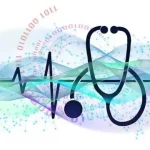
The use of technology in healthcare is revolutionizing the way doctors provide care, increasing the efficacy and efficiency of therapies and greatly improving patient outcomes.
At the vanguard of this revolution, technologies like telemedicine, electronic health records, and AI-driven diagnostics are transforming the healthcare system in ways never seen before.
Healthcare practitioners can improve patient safety, provide more precise and individualized care, and expedite administrative procedures by utilizing these technological advancements.
The Emergence of Telemedicine:
The advent of telemedicine has revolutionized healthcare by expanding access to treatment regardless of a patient’s location. Digital platforms have made it possible for patients to consult with their doctors without leaving the house, saving both time and money.
Those who live in rural or underdeveloped areas with limited access to medical facilities would especially benefit from this.
In the future, telemedicine is expected to become even more important as technology advances and integrates with other healthcare systems to provide increasingly more sophisticated and all-encompassing care options.
Electronic Health Records
Manual record-keeping and cumbersome paper files are things of the past. Authorized healthcare providers can readily access a digitized and central store of patient data thanks to electronic health records (EHRs).
The ease with which lab data, treatment plans, and patient histories may be accessed improves the standard of care considerably. By guaranteeing that all relevant data is available at the point of service, electronic health records (EHRs) lower the possibility of mistakes and enhance clinical decision-making.
EHRs offer advantages that go beyond better patient care. EHRs also make it easier for the many departments and specialists involved in a patient’s care to coordinate with one another, guaranteeing continuity and all-encompassing care.
AI-Powered Diagnostics:
Medical diagnostics is seeing a major advancement thanks to artificial intelligence (AI), which is providing instruments that improve disease detection efficiency and accuracy.
Large volumes of medical data, such as imaging scans, test results, and patient histories, can be analyzed by AI algorithms to find patterns that human eyes would miss. This enables earlier and more precise diagnosis, which is fundamental for the effective treatment of several diseases.
In the domains of radiology, pathology, and genomics, the analysis of large, complicated data sets is crucial. AI-driven diagnoses are especially helpful. Artificial intelligence enhances the precision and rapidity of medical diagnostics.
This improved effectiveness may result in earlier therapy commencement and shorter wait times for diagnostic results.
Patient Safety Event Reporting System:
Establishing a strong patient safety event reporting system (PSERS) is essential to guaranteeing patient safety in the healthcare industry. These systems are made to record and examine information about unfavorable events, close calls, and other situations that can endanger patients.
Through systematic collection and examination of this data, healthcare institutions can pinpoint root causes and put preventative measures in place. In addition to improving patient safety, PSERS encourage openness and ongoing development in healthcare settings. A patient safety event reporting system is only as good as its capacity to deliver useful information.
These systems, when thoroughly analyzed, might show patterns and trends that might point to systemic issues like malfunctioning machinery, faulty procedures, or poor communication. Proactively addressing these problems can greatly lower the chance of patient injury.
Using Technology to Get Better Results
Technological improvements will likely have an impact on healthcare in the future. Personalized medicine, wearable technology, and remote monitoring tools are just a few of the innovations that will drastically change the way healthcare is provided. For example, wearable technology makes it possible to continuously monitor vital signs and other health indicators, giving real-time data that may be utilized to make well-informed decisions regarding patient care.
Using remote monitoring systems, medical professionals can monitor patients’ health from a distance, allowing for prompt interventions and a decrease in the number of hospital visits.
A new age in medical practice will be ushered in as healthcare continues to change and more attention is placed on using technology to deliver more accurate, efficient, and patient-centered treatment.
Conclusion On Technology in Healthcare
Technology is altering healthcare, not simply improving it. Every advancement, from AI-driven diagnostics to telemedicine, moves the healthcare system closer to being accurate, patient-centered, and efficient. Accept these developments to see a time when healthcare is proactive rather than reactive, improving everyone’s health in the process.
About The Author:
Stacey Smith is a freelance health writer. She is passionate about writing about women’s health, dental health, diabetes, endocrinology, and nutrition and provides in-depth features on the latest in health news for medical clinics and health magazines.




